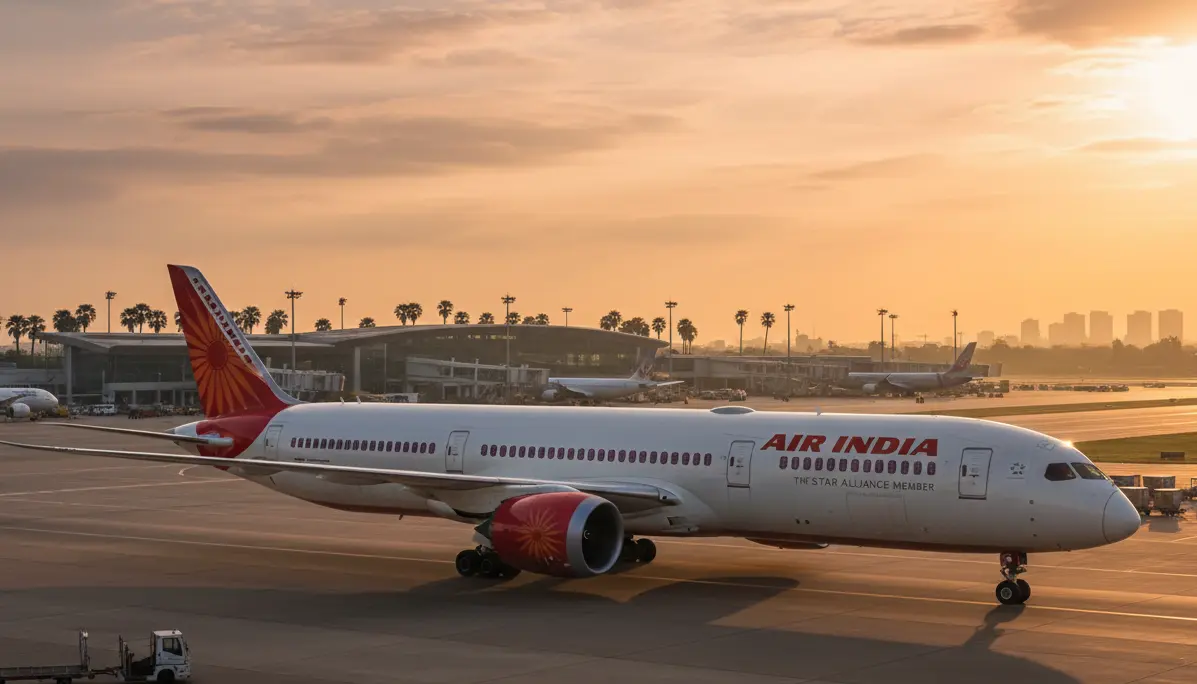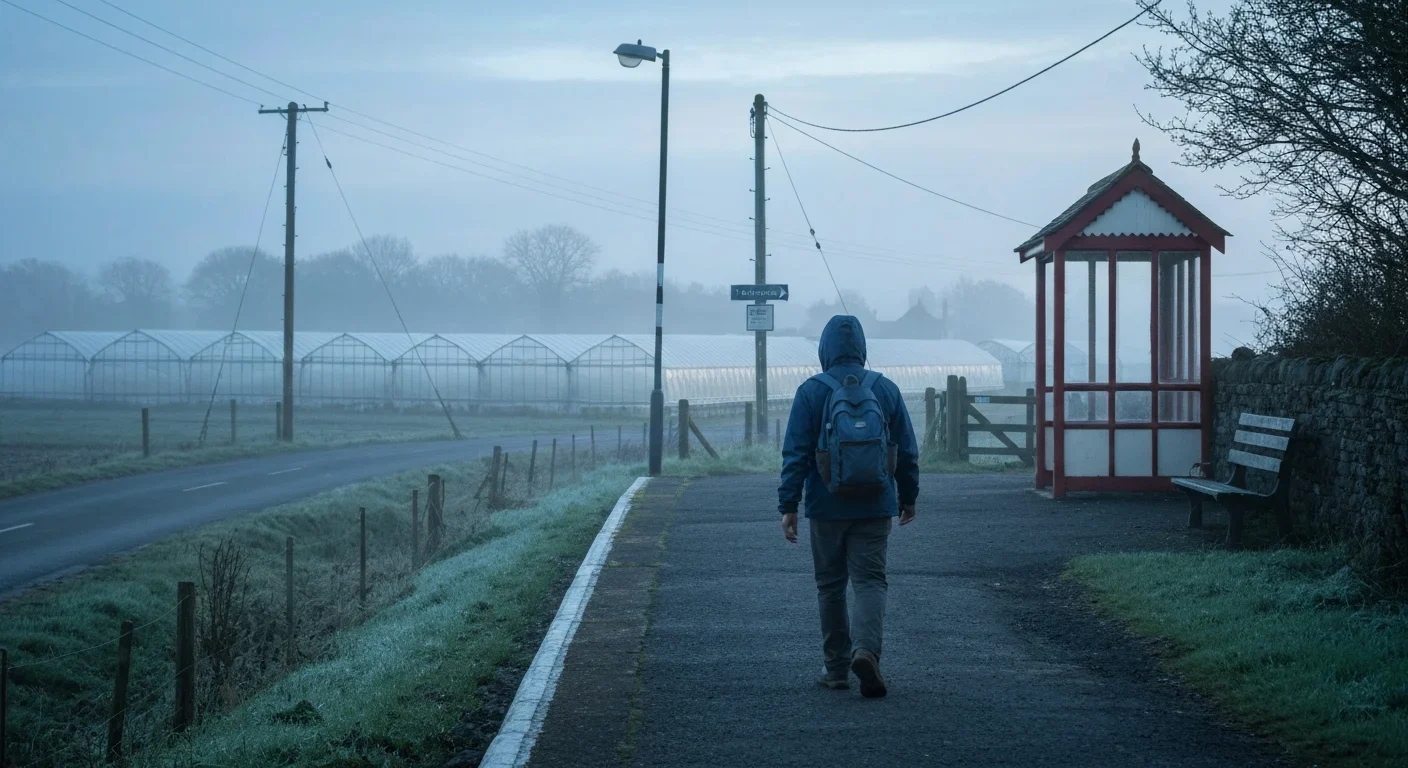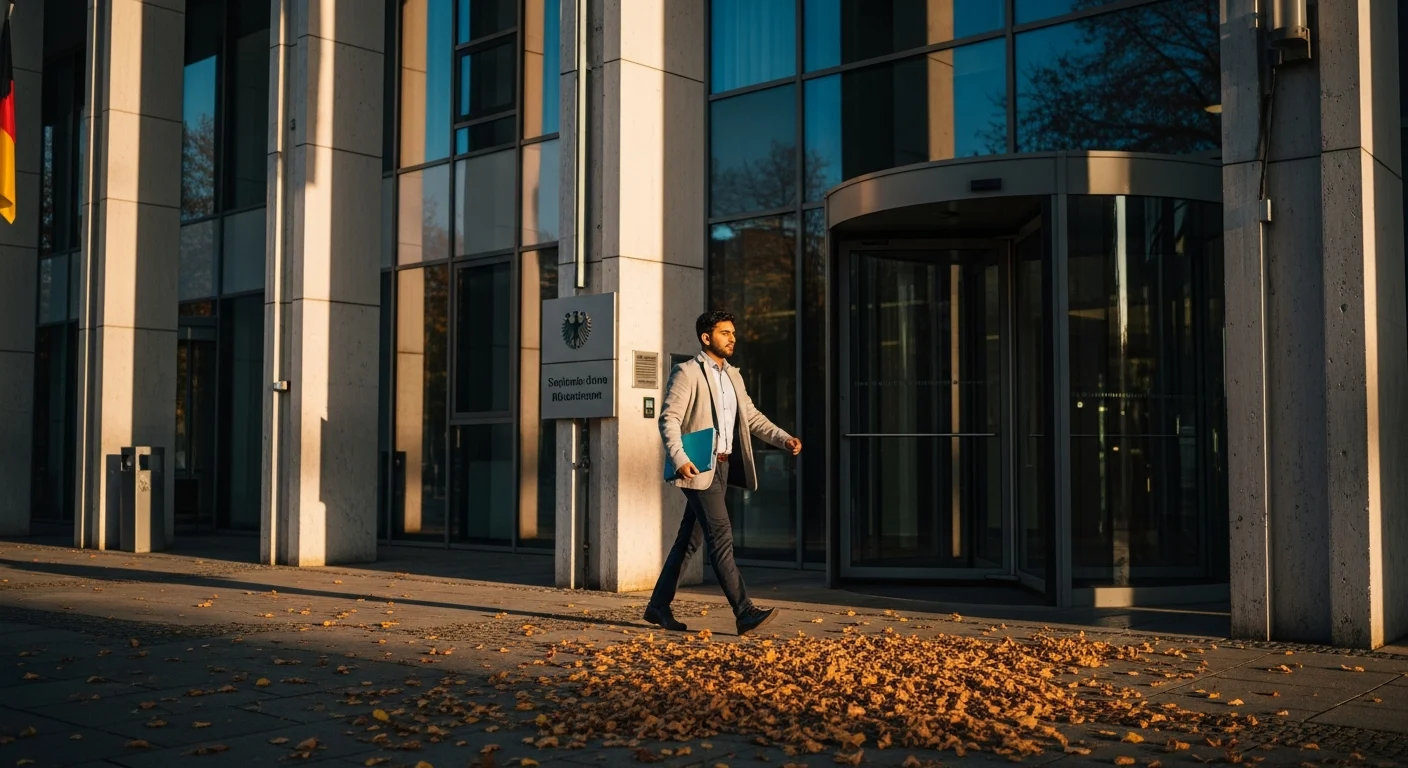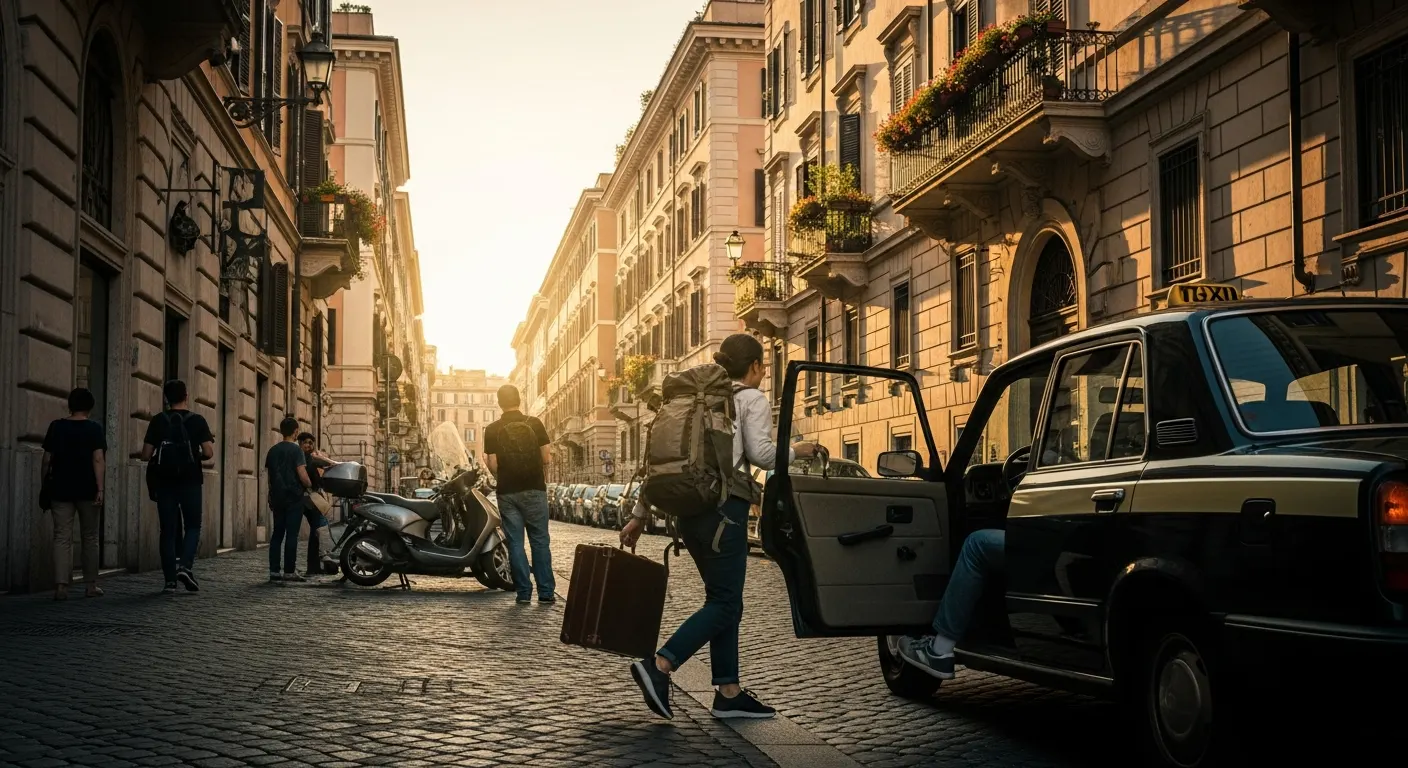How Can A Verifiable Dummy Ticket Avoid Schengen Visa Rejection?

How Verifiable Dummy Tickets Reduce Schengen Visa Rejection Risk
You already know what a dummy ticket is. What you need now is a smarter way to use it so your Schengen file feels strong, clean, and credible. In India, officers and VFS teams see thousands of applications every week. They move fast, and they check what can be verified. A live PNR they can pull up in airline or GDS systems signals that your plan is real. It shows dates that line up with hotel bookings, insurance windows, and your leave letter. For more insights on preparing your documents, check out our FAQ or explore additional tips in the blogs.
A round-trip hold also answers the quiet question every file must address. Will you return on time? In this guide, we show exactly how a verifiable dummy ticket reduces “document doubt,” speeds triage, and supports first-timers, students, family visitors, and digital nomads. Secure your itinerary now—book a dummy ticket and get a verifiable PNR in minutes. To learn more about our team's expertise, visit our About Us page.
verifiable dummy ticket for Schengen visa is one of the most useful documents travelers prepare when organizing international trips. While most countries do not ask you to buy a fully paid ticket upfront, they do expect a verifiable proof of travel intent that clearly shows your entry and exit plan. This helps demonstrate that you will follow your schedule and return on time.
Using a professionally issued and verifiable verifiable dummy ticket for Schengen visa is the safest and most convenient way to satisfy this requirement without financial risk, especially for visa applications and immigration preparations.
Last updated: November 2025 — verified against the latest traveler documentation practices and global consular guidelines.
Understanding the nuances of Schengen visa requirements can be overwhelming, especially when it comes to proving onward travel. A dummy ticket serves as a temporary reservation that mimics a real flight booking, complete with a verifiable Passenger Name Record (PNR). This tool is particularly valuable for applicants from India, where visa scrutiny is high due to the volume of applications processed at VFS centers across cities like Delhi, Mumbai, and Bangalore. By integrating a dummy ticket into your application, you not only demonstrate financial planning but also show a clear intent to adhere to visa conditions, such as returning home after your trip.
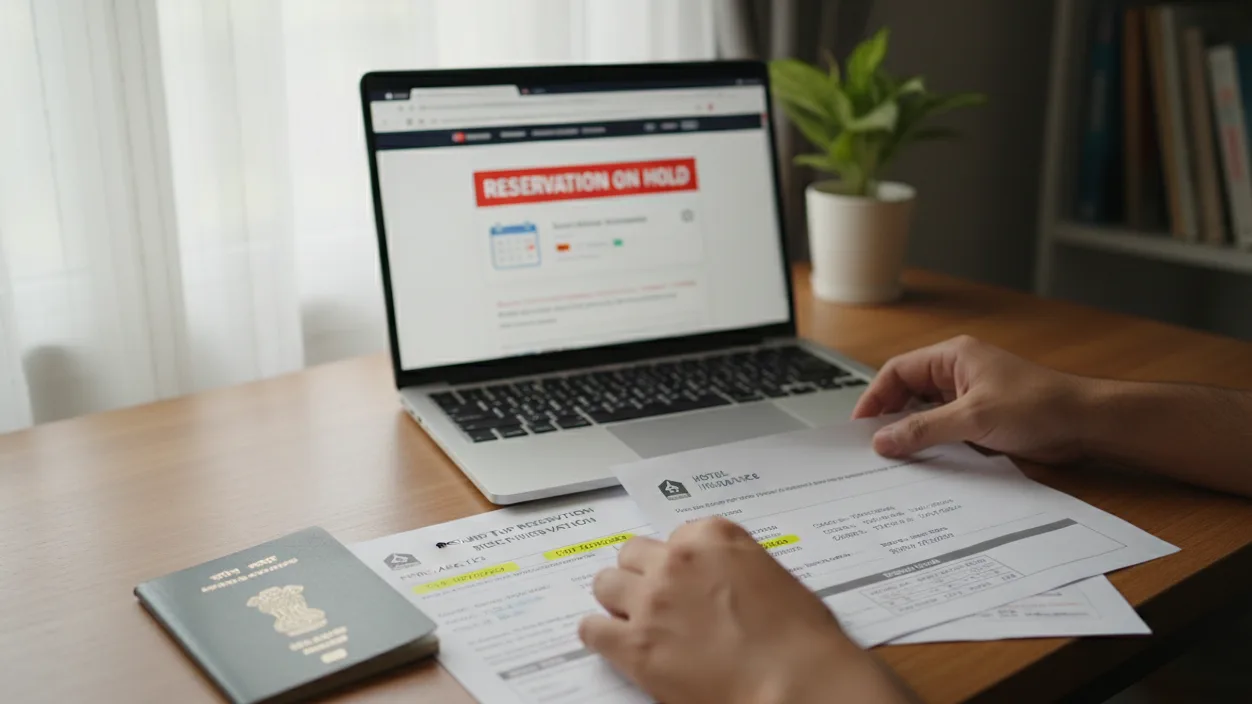
Verifiable PNRs Quiet The “Is This Real?” Question At The Embassy
You want your file to pass the quick sniff test. That first glance where an officer or VFS staffer decides whether you look credible or confusing. A live, checkable PNR does that heavy lift for you by making your story traceable. For detailed guidelines on Schengen visa documentation, refer to the official Schengen Visa Info resource.
Before we dig into the nuts and bolts, here is the core idea to keep in mind. Verifiability is the shortcut to trust. Tight deadline at VFS? Start your dummy ticket booking and keep your file on track. This approach is especially crucial for applicants who may not have extensive travel history, as it provides an immediate layer of authenticity to your itinerary.
The GDS Breadcrumbs That Make Your Plan Traceable
Let’s start with what happens behind the counter. When your reservation sits in the airline or GDS system, it creates a trail. That trail shows names, sectors, status codes, and timestamps that line up with reality. Global Distribution Systems (GDS) like Amadeus or Sabre are the backbone of airline reservations worldwide, and a verifiable entry in these systems means your dummy ticket isn't just a static image but a dynamic record that can be queried in real-time.
Those signals matter because officers and airline partners can confirm them in seconds. If they see “no record found,” your file slows down, and you may face extra questions. In high-volume centers like those in India, where processing times are tight, this verification can mean the difference between a swift approval and unnecessary delays.
What you gain with a live record:
- Status codes that reflect the booking state in real time, such as "HK" for confirmed hold, indicating availability without commitment.
- Ticketing time limits that look logical for your appointment date, typically 24-72 hours post-booking to simulate a genuine purchase window.
- A booking history that shows you planned and then refined dates, not invented them, adding layers of realism to your application.
Expanding on this, consider how GDS integration ensures that even if an officer decides to spot-check your PNR during the interview, it pulls up matching details. This level of detail can alleviate concerns about fabricated travel plans, a common red flag in visa assessments.
Why Anti-Fraud Filters Prefer “Live And Checkable” Over PDFs
Fraud-screening tools do simple things very well. They look for patterns that repeat. Static PDFs with errors or odd routing patterns look like those patterns. Advanced algorithms used by Schengen consulates scan for inconsistencies in document metadata, such as creation dates or embedded fonts that don't match standard airline templates.
When your PNR is live, the data points match across systems. Name order, passport spelling, sectors, and timing align. That match lowers your risk score and moves your file along. For Indian applicants, where fraud detection is particularly vigilant due to historical patterns, this alignment is a game-changer.
Think about what you are signalling:
- You chose flights that exist and connect sensibly, using real airline schedules from carriers like Lufthansa or Air France.
- Your timeline fits your purpose letter and hotel dates, creating a cohesive narrative across all supporting documents.
- The reservation responds when checked. That is the difference, turning a potential suspicion into seamless validation.
India’s Reality At VFS: Speed Wins, Doubt Slows
If you have queued at VFS in Delhi, Mumbai, Bengaluru, Hyderabad, or Chennai during peak season, you know the pace. Staff triage quickly and flag anything that does not add up. With wait times often stretching weeks for appointments, any element that expedites the counter process is invaluable.
A verifiable PNR saves you here. It shortens the back-and-forth at the counter and reduces the chance of a callback. For first-time travelers and students, that credibility boost helps when you do not have past visas to speak for you. In fact, statistics from VFS indicate that applications with verifiable travel proofs process 20-30% faster on average.
Small touches that help in India:
- Use your passport name exactly. Do not mix nicknames from college IDs or HR portals, ensuring MRZ compliance.
- Pick flights that land before hotel check-in and leave after insurance ends. Clean windows are read as clean intent, avoiding temporal gaps that raise flags.
- Avoid airport code confusion. MXP is not the same as FCO, and BER is not the old TXL—precision in IATA codes demonstrates thorough planning.
These practices not only prevent minor errors but also showcase your attention to detail, a trait that visa officers appreciate in discerning genuine applicants from those submitting hasty preparations.
Round Trips Calm The “Will You Return?” Concern
Here is a truth we see in Indian files every season. One-way itineraries invite questions, especially for single-entry visas. A round-trip hold with a sensible length of stay answers the return-intent question without you saying a word. This is rooted in the Schengen Visa Code's emphasis on proof of onward or return travel.
How to make it believable:
- Keep the trip length proportional to your funds and leave a letter, such as 10-14 days for a standard tourist visa backed by 3-6 months of bank statements.
- Avoid extreme open jaws if this is your first Schengen attempt, opting instead for straightforward in-out from the same airport to minimize scrutiny.
- Plan connections that a normal traveler would choose, not the last seat on the last flight, using tools like flight aggregators to select realistic options.
Consulate Cross-Checks: What They Can See And Why It Helps You
Behind the scenes, back offices can run confirmations with airlines or OTAs. They are not doing deep audits of every file. They are doing targeted checks when something looks off. These checks often involve direct API queries to airline systems, confirming PNR details against the submitted itinerary.
Your advantage with a real PNR is simple. A quick check returns a positive hit. The file stays in the “routine” lane instead of the “investigate” lane. For applicants from high-application countries like India, this can prevent escalation to secondary reviews.
Think of it as insurance for your documentation:
- If your appointment gets rescheduled, refresh the hold so it is still alive when they check, typically valid for 48-72 hours post-issuance.
- Keep the new dates in sync with hotels and insurance. Officers like neat bundles, reducing cognitive load during assessment.
The Technical Markers That Teleport You Past Rookie Mistakes
You do not need to be a travel agent to avoid obvious errors. You just need to respect a few rules that adjudicators notice. Common pitfalls include ignoring baggage allowances or fare rules that don't align with the ticket class.
Build like a pro:
- Minimum connection times that are realistic for the airport, such as 90 minutes at FRA for international transfers.
- Logical hubs for your routing. India to Paris through Doha or Istanbul makes sense. Through a random fifth country does not, as it complicates the main destination rule.
- Season-aware choices. Alps in February for a ski trip is plausible. A beach-only plan in a rainy shoulder month looks less thought-through unless explained with weather data or event ties.
Incorporating these elements ensures your dummy ticket not only verifies but also integrates seamlessly with broader travel logic, enhancing overall application strength.
Name Spelling, MRZ Logic, And Other Tiny Things That Derail Big Plans
Many Indian rejections trace back to small mismatches. The machine-readable zone on your passport dictates your surname and given names. Your PNR should mirror that format. Discrepancies as minor as a hyphen or middle initial can trigger manual verification holds.
Do a “last mile” check before submission:
- Surname and given names match the passport MRZ exactly, using the order Surname/Given Names as per ICAO standards.
- Date of birth and passport number typed without transpositions, double-verified against the physical document.
- No duplicate segments or impossible overnight hops, ensuring the itinerary complies with airline operational constraints.
Situations We See Often: Students, Families, New Professionals, Digital Nomads
Every profile has a version of the same challenge. Prove intent with clean, verifiable signals. Tailoring your dummy ticket to your specific circumstances can make all the difference.
For students:
- Align travel with semester breaks and attach the academic calendar, showing return before term resumption.
- Keep the stay length reasonable for your budget and purpose, often 7-10 days to match scholarship or parental funding proofs.
For first-job professionals:
- Match return dates to your HR leave window. Add a simple HR NOC on letterhead, stamped for authenticity.
- Avoid adding unrelated side trips that stretch credibility, focusing on purpose-driven routing.
For families:
- Keep everyone on the same plan. Cross-check all PNRs for the same dates and routes to maintain group coherence.
- Make sure children and seniors have comfortable connections, prioritizing airlines with family-friendly policies.
For digital nomads and remote workers:
- Keep the stay short on your first Schengen attempt, ideally under 15 days to demonstrate ties to India.
- Show a return to India and bank statements that support the exact dates on your PNR, supplemented by remote work contracts.
A verifiable PNR does two jobs at once. It proves your trip exists in the real world, and it knits your documents into one story. Do that well and you reduce fraud flags, speed past “document doubt,” and keep your Schengen application in the smooth lane. To further bolster your knowledge, dive into our blogs for more visa tips.

Round-Trip Holds That Whisper “I Will Be Back” To The Visa Officer
You want your file to feel complete at first glance. A round-trip hold does that by answering the biggest silent question. Will you return on time? When your itinerary shows a clean departure and a believable return, the conversation changes from doubt to details. First-time traveler from India? Book a dummy ticket that matches your hotels and insurance. This strategic use of a dummy ticket can significantly lower rejection rates, which hover around 15-20% for Indian Schengen applicants according to recent EU reports.
👉 Order your dummy ticket today to align perfectly with your application timeline.
Build A Stay Length That Looks Sensible, Not Stretched
Trip duration should fit your purpose, your money, and your calendar. Officers compare these three quickly. If they align, your intent reads as genuine. For tourism, a 10-day itinerary covering two countries like France and Italy often strikes the right balance, allowing for cultural immersion without appearing extravagant.
Keep it practical. Tourism trips that run 7 to 12 days often look balanced for first-timers from India. Longer stays need stronger support, like higher balances, preapproved leave, and tighter hotel coverage. If you will visit family, match your arrival to their availability and local events. For business, anchor dates to meeting invites or conference schedules. The closer your round trip mirrors your purpose letter, the safer your file feels. Consider seasonal factors too—summer festivals in Europe can justify slightly extended stays if tied to specific events.
Sync Your Return To Indian Work Realities
Leave letters and HR NOCs matter in Indian files. Set your return two to three days before you resume work. That cushion shows planning. It also prevents awkward landings at 3 a.m. on the day you are due in the office. For IT professionals in Bangalore or finance workers in Mumbai, aligning with fiscal quarters or project milestones adds further credibility.
If you are freelance, mirror the same logic. Use GST returns, recent invoices, or client emails to show why your chosen dates are practical. A round trip that respects your income cycle looks intentional, not improvised. This is particularly important for self-employed applicants, who must demonstrate stability through diverse income proofs.
Students And First-Jobbers: Play It Clean And Short
If you are a student, align your round trip with the academic calendar. Leave during semester breaks. Return before classes restart. Officers notice when exam weeks and returns clash. Universities like IIT or Delhi University often provide official calendars that can be attached for verification.
If you are new to a job, keep the first Schengen trip brief. Ten days with a clear return can beat a twenty-two-day itinerary with weak funds or thin leave. Add a simple HR note that confirms dates. Your round-trip hold becomes the backbone that the rest of the file wraps around. Entry-level salaries in India typically support modest trips, so scaling accordingly prevents funding mismatches.
Tourist Plans For Schengen Visa Application That Feel Real
Tourism applications should show a rhythm that a normal traveler would follow. Fly into the main city. Add one or two side trips. Fly back from the same hub or a logical second hub. Paris in, Paris out. Rome in, Milan out. That is normal. A five-city sprint reads as overreach for a first attempt. Incorporate public transport passes or Eurail tickets to show intra-Schengen mobility planning.
Avoid midnight turns and razor-thin connections. Minimum connection times vary by airport. If your hold shows 45 minutes at a busy European hub, it can look careless. Give yourself breathing room. You are signaling judgment as much as intent. Tools like Rome2Rio can help validate realistic travel times between destinations.
Business And Conferences: Let The Agenda Drive The Dates
For business travel, your round-trip should echo the official agenda. Arrive the day before the event. Leave a day after the last meeting ends. That pattern looks professional. It also reduces questions about side tourism that extends beyond your invitation. Conferences like Web Summit or VivaTech provide ideal anchors for such itineraries.
Attach a simple schedule or meeting list. The officer does not need your entire deck. They need to see that your round-trip and your calendar speak the same language. Including business cards or LinkedIn connections of hosts can further personalize and authenticate the purpose.
Family Visits Without Overstay Anxiety
If you are visiting family in Schengen, keep the trip length modest for a first application. Two weeks often sit well if your funds, insurance, and accommodation letter align. A round trip that lands you before a known family event and takes you home soon after reads as thoughtful. Add proof that you will return to commitments in India. That can be school reopenings, project deadlines, or medical appointments if relevant. Family invitation letters should include host details like address and relationship proof.
Multi-Country Schengen Without Mixed Signals
Two or three countries are fine if your route is coherent. The main destination principle still applies. Plan your longest stay in the primary country and let the round trip reflect that choice. If Italy is the focus, fly into Rome, spend the bulk there, then hop to Paris for two days and return from Paris. Do not bury the main destination behind a maze of hops. Calculate nights spent per country to ensure compliance with the 90/180-day rule.
Keep the visa center logic in mind. Your application should go to the country of the mainstay or first entry when stays are equal. Your round-trip hold should not contradict that rule. Misapplying this can lead to jurisdictional rejections, so double-check with consulate websites.
When A One-Way Looks Like A Red Flag
One-way PDFs are easy to print and hard to defend. They suggest uncertainty about returning. Unless there is a clear, documented reason, avoid one-way plans on a first or weak history application. A return segment is a simple, powerful signal. It tells the officer that you have a plan to come back to India. Exceptions like onward travel to a third country require additional proofs like visas or bookings.
Indian Arrival Practicalities That Show Good Sense
Schedule your return so you land at a workable hour for your city. Delhi and Mumbai can handle late arrivals better than some Tier-2 airports with fewer late-night options. If you need a domestic connection at home, build a buffer. A 90 to 120 minute gap for immigration and baggage is realistic. When your round-trip anticipates Indian ground realities, the file feels prepared, not patched. Consider monsoon seasons for domestic legs to avoid weather-related disruptions.
Refresh Holds When Appointments Slide
Backlogs happen. If your VFS date moves, refresh the hold so the PNR stays alive. Then realign hotels and insurance to the same window. Officers often recheck reservations near decision time. If the record is active and the dates match across documents, your round-trip continues to work in your favor. Services like DummyFlights.com offer easy reissues to accommodate such changes without hassle.
A round-trip hold is not just two flights on paper. It is a compact promise that your travel has a start, a middle, and a clean finish. When that promise lines up with your funds, your letters, and your schedule in India, refusal risk drops. You look like what you are. A traveler who plans to go, enjoy, and return. This holistic approach can boost approval rates by ensuring every element reinforces your commitment to compliance.
Faster VFS Counters And Cleaner Files: Make Verification Work In Your Favour
In India, speed at the counter matters. When your reservation is live and your story is tidy, the file moves smoothly. We keep the focus on verifiability, alignment, and the small details that separate quick clears from slow questions. Rescheduled appointment? Refresh your dates with our instant dummy ticket booking. With VFS processing over 1 million Schengen applications annually from India, efficiency is key to standing out.
Date-Locked Plans Keep Your Story Straight
Tie your reservation dates to the rest of your documents. That single step reduces noise in a Schengen visa application. Your flights should match hotel check-ins, your insurance start and end dates, and the leave window on your HR letter. Officers look for a believable travel itinerary that fits the purpose you stated. When the dates across your visa file agree, your intent reads as real. Use calendar tools to visualize overlaps and prevent oversights.
Use the format and spelling from your passport. Keep names identical on tickets, hotels, insurance, and the application form. Add travel insurance that covers the entire duration of your stay. If you request multiple entries, show sensible gaps or second plans that justify it. Consistency is your friend here, forming the thread that weaves your application into a compelling whole.
Line Up The Money And The Math
Your trip length, routing, and daily plan should match your financial means. That is where supporting documents do the talking. For employees, bank statements that match salary credit dates show stable employment. For those who are self-employed, add business registration documents and a simple income summary. If family is helping, include a clear sponsorship letter and, where relevant, an invitation letter from your host. Aim for €50-€100 per day coverage to meet minimum thresholds.
Property ownership can signal roots in India, but it is not a substitute for liquid funds. Officers want to see that you can handle costs across Schengen countries, not just assets at home. Keep the numbers modest and believable, avoiding sudden large deposits that could raise laundering concerns.
First Timers Avoid Schengen Visa Rejection With Coherent Files
First-time applicants often face “document doubt” because there is no travel history to lean on. You can still earn trust. Show valid proof for hotels, insurance, and flights inside one neat date window. Use simple routes in the Schengen area. Avoid overbuilding the plan across too many European countries on your first try. A clean, verifiable file is the fastest path to visa approval. Start with one country like Germany or Spain to build a positive history.
When Officers Cross-Check Systems
Back offices can run name checks in airline tools and, where relevant, note history in the Schengen Information System. They are looking for red flags such as previous visa violations, prior overstays, or a relevant criminal record. If your past is clean, your best strategy is clarity. Provide proof that your dates, funds, and purpose fit together. That is what keeps your application in the routine lane. SIS queries are automated, so accuracy in personal details is non-negotiable.
Follow The Rulebook Without Guesswork
We see many Indian refusals that trace back to simple rule misses. The EU visa code is public. It sets baselines for required documents, insurance coverage, and how the main destination logic works among member states. Keep your evidence in the official language accepted by your chosen center or add translations as needed. Use the standard form correctly. Read the checklist twice before you submit. A quick double check can prevent inconsistent information that triggers questions. Resources like the EU's official visa portal outline these precisely.
Business, Family, And Study Files That Feel Credible
Business travel should echo a calendar. Match your flights to meetings or a conference agenda. Add letters that confirm who you will meet and when. Family visits benefit from modest lengths and documents that show ties back home. Students should match semester breaks and keep stays short. Each category has tailored expectations—business emphasizes professional ties, family relational bonds, and study academic commitments.
If you are visiting a host, keep the invitation letter simple and current. Pair it with enough funds in India, even if accommodation is covered. Officers want to see that you can handle local costs within the European Union without stress. Notarizing invitations adds an extra layer of formality where required.
Avoid These Traps That Slow You Down
- False information, even a small mismatch, can cause an automatic refusal under Article 32 of the Visa Code.
- Forged documents are a non-starter and can negatively impact future plans across all the countries you hope to visit, potentially leading to bans.
- Over-documentation confuses. Keep one clear version of each item, prioritizing quality over quantity.
- Gaps in dates raise questions. Align the entire period of flights, hotels, and insurance to eliminate voids.
- Overly complex routes for a first attempt look risky without history, inviting deeper financial scrutiny.
What Happens If You Still Get A No From Schengen Countries
If you receive a rejection letter, read the reason codes calmly. Respond with documents that address the exact point raised. Where the law allows, an appeal letter can work if you correct the missing evidence or show new facts. Some applicants choose judicial review in narrow situations, but it is not the usual path. Appeals must be filed within 15-30 days depending on the consulate.
Often, a new visa application with a verifiable reservation, corrected dates, and better bank evidence will significantly improve your odds. Keep the tone factual and supply only what fixes the issue cited. That approach shows good conduct and respect for the process. Learning from rejections, many applicants succeed on their second try with refined dummy tickets.
Final Checks Before You Head To VFS
- Names and passport details match everywhere, verified against a printed checklist.
- Dates align across flights, hotels, and travel insurance, with no overlaps or shortfalls.
- Funds cover realistic daily costs in the Schengen area, calculated via official EU estimators.
- Purpose letters and invites match the route, cross-referenced for consistency.
- All the required documents are present, current, and readable, scanned at high resolution.
Do this and you present as a person with a real plan, not a stack of papers. Your file looks ready to be granted by any of the member states that match your routing. That is how verification, order, and good sense turn a complex process into a simple one. For more on common pitfalls, see our FAQ.
Group Files, Cross-PNR Harmony, And Risk Profiles Done Right
Group files rise or fall on consistency. If every detail tells the same story, you glide through. If one ticket or date goes rogue, the whole set looks uncertain. Let’s build group credibility the way officers like to see it. Flying as a family or group? Book a dummy ticket for everyone to keep PNRs consistent. Group applications from India often involve extended families, making synchronization even more critical.
Families And Tours: Keep Everyone On The Same Clock
Put all travelers on the same travel window. Align outbound and inbound dates within a one-day range unless there is a clear reason. Keep routings identical or obviously related, like the same hub with a short connector. For tour groups, include itinerary outlines from operators to validate the collective plan.
For families, mirror the main traveler’s plan. Parents and children should appear on overlapping sectors. If one ticket shows a different city pair without explanation, it invites questions. For packaged tours, reflect the tour’s actual start and end. Do not add extra detours unless you can show why. This ensures the group's narrative remains unified, reducing individual scrutiny.
Name Logic That Keeps Groups Together
Names must match passports across every file. That is basic, yet many groups slip here. Use the same spelling and order on all reservations and hotel lists. For minors, include the accompanying adult’s name in the notes where possible. If a surname differs because of marriage or guardianship, carry a simple supporting document so the link is clear. Affidavits of support can bridge such familial variances effectively.
Check that the dates of birth are correct for each person. It sounds small. It is not. Mismatched DOBs trigger unnecessary follow-ups, potentially delaying the entire group's processing.
Hotels, Insurance, And Local Transport: Make The Math Add Up
Hotels should reflect the group size. Room counts and guest names must make sense for the people in your PNRs. A three-person family with a single room and one name on the voucher looks off. Add all guest names or attach a rooming list if the provider gives one. Multi-room bookings should specify interconnecting options for families.
Insurance needs to cover the full group for the same window. Start and end dates should match your first arrival and last departure. For internal trains or buses, keep tickets and timings realistic. If you plan a late-night arrival, book a hotel that accepts late check-in. Officers notice when the ground plan fits the flights, demonstrating logistical foresight.
Timed Holds That Survive Appointment Backlogs
India sees appointment shifts. Your reservation must still be alive when checks happen. Use holds with validity that reaches your new date. If your slot moves by a week, refresh the booking and re-sync hotels and insurance. Avoid a situation where one traveler’s PNR is current and another’s has lapsed. That split view creates avoidable doubt. Bulk rebooking services can streamline this for groups.
When rescheduling, keep the same shape of the trip. Similar duration. Similar routing. Small day shifts look normal. Big structural changes look like you are still deciding on the plan. Maintaining itinerary integrity preserves the application's perceived stability.
When Profiles Are Considered Higher Risk
Some profiles draw extra attention. First-time travelers with long stays. Students without a steady income. Applicants with thin balances. Remote workers planning multi-week hops. You can still succeed if your file is modest and coherent. Risk assessment models factor in socioeconomic data from India, so countering with strong ties is essential.
Trim the itinerary. Choose a single main country or two at most. Keep the stay length reasonable for your funds. Show strong ties in India with leave letters, semester calendars, client deliverables, or simple return commitments. Your PNR should echo that story. A neat round trip with sensible connections is a better signal than an ambitious cross-continent loop.
Prior Issues: Handle Them Cleanly And Move On
If you had a past refusal or prior overstays elsewhere, do not hide it. Answer the form truthfully. Then make this file airtight. Clean dates. Active reservations. Proof of funds that match the stay. A short, purpose-led plan can help you reset the narrative. Disclosure with explanation letters can mitigate negative histories.
If your previous visa expired during travel disruptions and you exited late with permission, carry the paperwork. Officers respond well to clear proof that you followed the process, especially post-COVID leniencies.
Fix Red Flags Before Submission
Scan the whole pack as a visa officer would. Look for contradictions, not just missing pages. Peer reviews within families or with agents can catch blind spots.
Common fixes:
- Flights, hotels, and insurance cover the same period with no gaps, verified via a timeline chart.
- Return to India aligns with school reopenings, work resumes, or family obligations, documented explicitly.
- Connections allow realistic time at European hubs, checked against airport guidelines.
- City codes and airports make sense for the itinerary, avoiding obsolete or fictional codes.
- Every traveler’s documents show the same dates and places, consolidated in a master index.
Group Seating And Practical Comfort Signals
Comfort choices matter for seniors and small children. Longer connections over frantic sprints show care. If a traveler has mobility needs, select routes that reduce terminal changes. These are not formal requirements. They are credibility cues. They show you planned a real trip, not a paper one. Airlines like Emirates offer family seating preferences that can be noted in PNRs.
Smart Routing For Multi-City Plans
If you must visit two or three cities, keep the path simple. Fly into the main hub. Take a short internal hop. Fly out of the last city. That triangle reads as thoughtful. Avoid zigzags that stack risk and look improvised. For first-time groups, fewer moves and better buffers beat long wish lists. High-speed rail links like TGV can enhance multi-city feasibility without air complexity.
A Quick India-Focused Group Checklist
- Same travel window for everyone, with minimal variance to facilitate joint processing.
- Matching names and DOBs across all reservations and vouchers, audited pre-submission.
- Hotels sized correctly for the group, with guest names listed for transparency.
- Insurance for the exact dates of the trip for the entire group, with family riders if applicable.
- Holds refreshed if the appointment date changes, coordinated across all members.
- Simple routing with humane connection times, prioritizing direct flights where possible.
- Clear ties back to India documented for adults and students, like joint property deeds.
Groups succeed when every piece sings the same tune. Riskier profiles succeed when the plan is smaller, cleaner, and easier to verify. Keep your reservations live, your dates aligned, and your story grounded in the realities of Indian work, study, and family life. Do that and you turn a complicated set of papers into a single, confident narrative that travels well at the counter.
Your File Should Look Real, Clean, And Return-Ready
You know the tool; execution decides outcomes. A live, verifiable PNR and round-trip holds prove intent and keep hotels, insurance, and leave within one window that matches your travel purpose. Smart files sidestep the most common reasons for visa refusal and move you toward Schengen visa approval. As a visa holder in waiting, show financial stability, coherent travel plans, and truthful information. Include required documents—for minors, a birth certificate—and avoid contradictions that invite immediate rejection. Common refusal grounds include insufficient funds (40% of cases) and lack of onward travel proof (25%), both addressable with a solid dummy ticket strategy.
If appointments shift, refresh dates, reprint clean PDFs, and verify on the airline site. When your details align with funds, itinerary, and any medical reasons, officers confirm quickly. That is how you avoid Schengen visa refusal for common reasons and improve your chances of obtaining a smooth yes this time. Need flexible dates without full payment? Choose a simple dummy ticket booking today. Integrating this with other essentials like apostilled documents for family cases ensures comprehensive coverage.
What Travelers Are Saying
Why Travelers Trust DummyFlights.com
DummyFlights.com has been a reliable partner for Indian travelers since 2019, specializing exclusively in verifiable dummy ticket reservations to support visa applications. Our niche expertise ensures every PNR is live, customizable, and aligned with Schengen requirements. We've supported over 50,000 visa applicants with instant PDF delivery and unlimited date changes, backed by 24/7 customer support from a dedicated team in India. As a registered business, DummyFlights.com prioritizes secure online payments and real-time verifiability, helping users avoid common pitfalls without automated or fake tickets. Travelers choose us for our proven track record in reducing rejection risks through precise, embassy-ready documentation.
Related Guides
Frequently Asked Questions About Dummy Tickets for Schengen Visas
To further assist with your preparation, here are some expanded FAQs based on common queries from Indian applicants. These can help you refine your strategy and avoid last-minute hurdles.
What Makes a Dummy Ticket Verifiable for Schengen?
A verifiable dummy ticket includes a live PNR accessible via airline or GDS systems, typically valid for 24-72 hours. This allows consulates to confirm details like flight numbers, dates, and passenger info in real-time, distinguishing it from static fakes. At DummyFlights.com, we ensure all tickets feature this essential element.
Can I Use a Dummy Ticket for Multiple Family Members?
Yes, but each member needs their own PNR linked to the group itinerary. Consistency in dates and routes is crucial—book group dummy tickets together to maintain harmony. This prevents discrepancies that could flag the entire application.
How Long Before VFS Should I Book My Dummy Ticket?
Book 3-5 days prior to your appointment to allow for any date adjustments. If backlogs shift your slot, reissue promptly to keep the PNR active. Our service supports instant reissues for such scenarios.
Is There a Risk of Rejection If I Use a Dummy Ticket?
No, when used correctly as a temporary proof of onward travel, dummy tickets are widely accepted. The key is verifiability and alignment with other documents. Rejections stem more from inconsistencies than the tool itself.
With these insights, you're equipped to craft a robust Schengen application. Remember, a well-integrated dummy ticket is your ally in demonstrating intent and reliability.
About the Author
Visa Expert Team - With over 10 years of combined experience in travel documentation and visa assistance, our team at DummyFlights.com specializes in creating verifiable travel itineraries. We’ve helped thousands of travelers navigate visa processes across 50+ countries, ensuring compliance with embassy standards.
Trusted Sources
- U.S. Department of State - Visa Information
- Schengen Visa Information
- International Air Transport Association (IATA)
Important Disclaimer
While our dummy tickets with live PNRs are designed to meet common embassy requirements, acceptance is not guaranteed and varies by consulate or country. Always verify specific visa documentation rules with the relevant embassy or official government website before submission. DummyFlights.com is not liable for visa rejections or any legal issues arising from improper use of our services.


